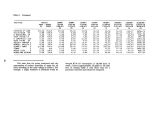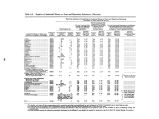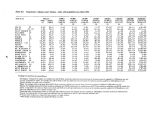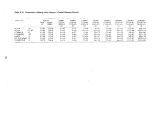| OCR Text |
Show policy ( Land and Water Conservation Fund Act and the Federal Water Recreation Projects Act) stresses the need for the user to pay. Nevertheless, only nominal charges have been employed, usually an entrance fee, and little revenue has been raised. It has been estimated ( Davis and Hanke, 1971) that $ 10 million in fees collected from federal recreation areas amounts to 5 cents for each of the 200 million visitors to national parks and forests. Davis and Hanke ( 1971) suggest a two- part fee system for waterbased recreation. The first part would be a user's general pass and the second an additional fee levied at peak periods such as holidays, summer season, and weekends, and for special services such as campgrounds, marinas, swimming areas, etc. Crutchfield ( 1962) points out that the fund- raising potential of fees on sport fishing is apparent from the huge rentals paid on land bordering salmon streams in the Canadian Maritimes and the high license fees paid by nonresidents. In England, fishing rights for 1.25 miles on the River Lune were sold at auction in 1961 for L20,750 ($ 54,000). For charging, a recognizable product must be defined and specific users identified. In the case of fishing, the product is fishing and not fish, and the value of fishing areas vary greatly. Crutchfield suggests several approaches to valuation of sport fishing. A gross value could be estimated by surveys of angler expenditures. The biggest problem with this approach is that it excludes indirect expenditures made by the community or others on behalf of the angler. Out- of- pocket fishing costs cover only the costs of necessary equipment and transportation to the fishing area. Another alternative, the net value approach, attempts to meet this objection by valuing the fishing opportunity at cost, including all costs of providing the fishery, transportation, and equipment. Yet another approach estimates the market value of fish caught as the value of recreational fishing. However, fish are not the product, but fishing. One last approach which Crutchfield discusses is the valuation of fishing time. The basic assumption is that days fishing could have been spent earning income. This method would require lengthly income surveys, and it fails to differentiate between different types of fishing and other nonpriced recreation ( Crutchfield, 1962). In practice, travel cost is frequently used as a gage of the benefit to be applied to recreational use. In using this method, the disutility of overcoming distance should be estimated " to be the sum of at least three factors: money costs, time cost, and the utility of driving or traveling" ( Knetsch and Davis, 1966). These benefit estimates provide an upper limit to revenues that could be collected by user fees. Flood Control Pricing Policy Traditionally flood control projects have been viewed as a pure public good for which no fair price could be set. Major reservoir projects have generally been provided out of federal revenues on a nonreimbursable basis. Local beneficiaries have been required on minor reservoirs and other flood projects to provide lands, easements, and rights- of- way, and in the case of local protection projects, to operate and maintain the projects after completion. Since occupants of flood prone areas face quantifiable financial risks from flood hazards, user charges for flood protection are possible. Compulsory flood insurance is an example pricing scheme in this area. Navigation Pricing Policy Under a policy of subsidization dating back to the Northwest Ordinance of 1787 which states that the waterways shall be free forever, users of the nation's waterways pay none of the costs of inland waterway development. However, the beginnings of a movement toward user- pay principles can be seen in the Presidents budget of 1972 which recommends that users of inland waterways begin sharing part of the costs of waterway development and operation. User fees for navigation might be set equal to average variable costs to cover the operation and maintenance of facilities. Possibilities for collection of fees include license fees, fuel taxes, and segment tolls. Complementary to segment tolls, a system of congestion tolls could be levied where lock usage is heaviest. Opportunity cost of waiting time could be calculated to arrive at some level of fee ( Hanke and Davis, 1971). The National Water Commission ( 1973) advocates that carriers maintain a record of their use in terms of ton miles, and periodically submit a report. Along with this report, somewhat like an income tax return, payment could be made according to the number of units reported. 16 |







































































































